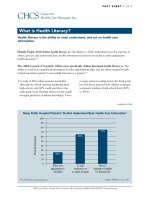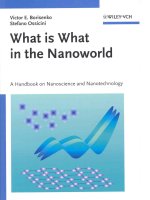what is hot on the moon tonight
Bạn đang xem bản rút gọn của tài liệu. Xem và tải ngay bản đầy đủ của tài liệu tại đây (9.23 MB, 190 trang )
What’sHotontheMoonTonight:TheUltimateGuidetoLunar
Observing
Copyright©2015AndrewPlanck
Allrightsreserved.
Nopartofthisbookmaybereproducedinanywritten,electronic,recording,or
photocopyingwithoutwrittenpermissionofthepublisherorauthor.Theexceptionwould
beinthecaseofbriefquotationsembodiedinthecriticalarticlesorreviewsandpages
wherepermissionisspecificallygrantedbythepublisherorauthor.
Althougheveryprecautionhasbeentakentoverifytheaccuracyoftheinformation
containedherein,thepublisherandauthorassumenoresponsibilityforanyerrorsor
omissions.Noliabilityisassumedfordamagesthatmayresultfromtheuseofinformation
containedwithin.
Booksmaybepurchasedbycontactingthepublisherorauthorthroughthewebsitebelow:
AndrewPlanck.com
CoverandInteriorDesign:NickZelinger(NZGraphics)
Publisher:MoonScapePublishing,LLC
Editor:JohnMaling(EditingByJohn)
ManuscriptConsultant:JudithBriles(TheBookShepherd)
ISBN:978-0-9908769-0-8
LibraryofCongressCatalogNumber:2014918951
1)Science2)Astronomy3)Moon
Dedicatedtomywife,Susan
andtomytwodaughters,SarahandStefanie
Contents
Foreword
Acknowledgments
HowtoUsethisGuide
MapofMajorSeas
NightlyGuidetoLunarFeatures
DAYS1&2(T=79°-68°E)
DAY3(T=59°E)
Day4(T=45°E)
Day5(T=24°E.)
Day6(T=10°E)
Day7(T=0°)
Day8(T=12°W)
Day9(T=21°W)
Day10(T=28°W)
Day11(T=39°W)
Day12(T=54°W)
Day13(T=67°W)
Day14(T=81°W)
Day15andbeyond
Day16(T=72°)
Day17(T=60°)
FINALTHOUGHTS
GLOSSARY
AppendixA:HistoricalNotes
AppendixB:PronunciationGuide
AbouttheAuthor
Foreword
AndrewPlanckfirstcametomyattentionwhenhesubmittedtoLunarPhotooftheDay
animageofthelunarcraterPitatusandaphotoofapiehehadmade.Boththe60-mile
diametercraterandthe10”widepieareringedbyfracturesthatprobablyformedthesame
way.Gasesassociatedwiththelavasthatfilledthecraterlifteditsfloor,whichcooledand
thencollapsedwiththefracturesmarkingthebreakingpoint.Thepiecrustdidthesame,
withthegasescomingfromcherriesratherthanlavas.Althoughthepieislonggone,you
willalwaysthinkofitwhenobservingPitatus.
This comparison is characteristic of Andrew’s practical approach to observing and
understanding the Moon. His new observing guide, What’s Hot on the Moon Tonight?,
pointsoutinterestingtargetstoobserve,nightbynightduringthelunarmonth.Thereare
descriptions of the craters, mountains, rilles and domes that you can see, but also brief
explanations of the geologic processes that formed them. Understanding what you see
makesobservingfarmoreinteresting—ithascertainlyhookedmeformorethan50years.
Likethetitle,thewritinginWhat’sHotontheMoonTonight?isbriskandfun.Because
manyunfamiliartermsareneededtodescribelunarfeatures,Andrewincludesa35-page
Glossary,whichisreallyamisnomer.Ratherthanbeingsimplyadrudgeofdefinitions,it
isaseriesofmini-essays.What’sHotalsoincludes12pagestellingalittleaboutsomeof
theancientandmodernscientistswhosenameshavebeengiventolunarfeatures.Youwill
learn,forexample,thatthemonkwhoaddedthenameCopernicustotheMoondiditasan
insult by flinging the then controversial scientist’s crater into the Ocean of Storms. The
monkisforgotten,thefameofCopernicusiseternal.
ReadingabouttheMoonisfine,butAndrewalsoencouragesyoutomakenotesfrom
yourobservationsbyprovidingplentyofspacetowritedownyourobservations,aswell
ascircularformssoyoucansketchwhatappearsintheeyepiece.Beingforcedtofillina
blankspaceonadrawingdrivesyoubacktotheeyepiecetolookmorecarefullyatevery
pieceofthelandscape,therebyincreasingyourfamiliarityandknowledge.
What are you waiting for? Grab your telescope, a pencil and this book for a personal
tourofthemagicalworldinoursky.
CharlesWood
AuthorofTheModernMoon:APersonalView
CreatorofLunarPhotooftheDay,LPOD.wikispaces.com
Acknowledgments
Firstandforemost,Iwouldliketothankmywife,Susan,whogivesmeinspirationtodo
creative things. She patiently supported and encouraged me through the several years it
tooktowritethisbook.Susanalsoreadtheentiremanuscript,redpencilinhand,andwith
a wife’s unfailing instinct helped keep me subdued when I was tempted to stray during
unbridledmoments.
OnedayIserendipitouslystumbledintoamonthlywriters’groupthatwasconductedby
JudithBriles(TheBookShepherd)inherhomeinAurora,Colorado.Judithhasastunning
amount of knowledge about writing and publishing and shares it freely at her monthly
meet-ups.Iwasdoublyfortunateinthatherhusband,JohnMaling(EditingByJohn)isa
gifted professional editor and I promptly hired him to edit this book. I am enormously
gratefultohimfortheworkhedid.
JudithandJohnrecommendedtheirfriendandcolleagueNickZelinger(NZGraphics)
todothebookdesign.IamequallyindebtedtoNickforthesuperiorworkhedidforthe
coverandinteriordesign.
Iwouldliketothankmyfriend,SallieGreenwood,whoisawriterandeditor,forvery
kindlyagreeingtolookoverthemanuscriptandmakecomments.
My long time astronomy buddy, Andy Robertson, also read the manuscript and
correctedseveralglaringerrors.
I am indebted to Charles Wood, author of The Modern Moon: A Personal View, for
writingtheForeword,andalongwithWesHiggins,givingmepermissiontousethephoto
of the crater Pitatus which was published on the Lunar Photo of the Day website for
March10,2006(LPOD.wikispaces.com)
MyfriendBrianKimballoftheLongmontAstronomicalSociety(anastro-photographer
parexcellence)allowedmetouseseveralofhisphotos.
DanaThompsonoftheColumbusAstronomicalSocietygavemepermissiontousehis
photooftheLunarX,alittleknownphenomenonwhichappearsonlyforafewhourson
lunarDay6.
I am indebted to Mike Siddoway, professor of mathematics at Colorado College, for
workingouttheformulaforpersonaleyeresolutionfoundintheGlossary.
Gray Photography of Corpus Christi, Texas, kindly provided the photo used in the
“AbouttheAuthor”sectionfreeofcharge.
Unless otherwise noted, all other images are from NASA / USGS / BMDO / LROC /
ASU/DLR/LOLA/MoonGlobe.Usedbypermission.
HowtoUsethisGuide
TheMoongetsabadrap.Althoughitisathingofastonishingbeautyandcomplexity,it
is often looked upon by astronomers as a benevolent nuisance. It’s great for poets and
lovers, but it interferes with the viewing of faint fuzzy things that are millions of light
yearsaway.BecausethefeeblelightfromtheseobjectsiswashedoutbytheMoon’sglare,
astronomers will frequently not even bother to take out their telescopes when there is a
Moon in the sky. In doing so, they deprive themselves of one of the richest and most
fascinatingviewsintheentireheavens.Paradoxically,ifwecouldseeJupiter,Mars,and
Saturn in the same detail that we see the Moon, we probably would never leave our
telescopes!
One of the main purposes of this guide is to encourage astronomers to look upon the
Moonasafriendinsteadofanadversary.Itisdesignedtoenabletheobservertositathis
––––
Thereareroughly300,000craterswiderthan0.6milesonthenearsideof
theMoon.
––––––––orhertelescope,turntoaparticulardayinthelunarmonth,andspendsubstantialtime
“walking”overthelunarsurfaceobserving,exploring,readingabout,andunderstanding
the history and formative processes of its various features. Both beginners and
experiencedastronomerswillfindthisguidetobeenormouslyuseful.
The Moon is a delightful playground that will keep you fascinated for many years.
Althoughsome10,000craterslargerthantwomilesindiameterarevisiblethrough
––––
Someearly60mmtelescopeshadgottensomeundeservedbadpress.Myfirst
telescopewasa60mmTasco.Althoughithadasmallaperture,onceI
investedinhighqualityeyepiecesthetelescopeperformedadmirablyand
gaveperfectdiffractionpatternsaroundstars.Fiftyyearsandsixtelescopes
laterIstillhave(anduse)thatTasco!
––––––––amateurtelescopeswithatleasta6”aperture,thisguideisnotmerelyalistofobjects;it
isdesignedtoincreaseyourenjoymentbyincreasingyourunderstanding.Itwillteachyou
howto“read”theMoonasyouarestrollingaboutitssurfacewithyourtelescope.Evena
small 60mm telescope will show you an astonishing amount of detail. Take your time;
don’tbeinahurry.Thisisanopportunitytostopandsmelltheroses.
In addition to a telescope and this book, you will need a good map of the Moon
(preferablySky&Telescope’sFieldMapoftheMoonavailablefromskyandtelescope.com
oramazon.com).TheFieldMapisthefinestmapoftheMoonavailableandisdesignedto
be used comfortably at the telescope. Lunar features that are described in this book are
keyed to Sky and Tel’s map, and entries will look like this—Plato: [NW/D9; L=9°]—
meaningfoldyourFieldMaptothenorthwestquadrant,gridlocationD9.1However,any
mapthathasthefeaturesindexedwillwork.TheentryL=9°indicatesthelongitudeofthe
lunarfeatureandcanbeenormouslyhelpful.Whenyouareplanninganight’sobservation,
findoutwhatthelongitudeoftheterminatorwillbe(youcanusetheMoonMapProapp
for this).2 Any lunar feature which is within 10° or so of the terminator will have
astonishingdetail!
Manyofthefeaturesdescribedareaccompaniedbythumbnailimagestohelpyouget
oriented. I have deliberately kept these images small, as this should be a voyage of
personaldiscovery.Yourmostexcitingmomentswillcomewhileyouareattheeyepiece,
notwhileyouarelookingatpictures.
If you have a smartphone or similar device, then take advantage of the several
astronomyappsthatareavailableoniTunessuchasSkySafari,LunarPhase,MoonMap
Pro,andMoonGlobeHD.3 As of this writing, only SkySafari will give you the critical
LunarDayfortheeveningthatyouplanto
––––
TheMoontakesabout29days(fromnewMoontonewMoon)tocycle
throughitsphases.ThesearereferredtoasLunarDays1-29.So,for
example,ifyouwishtoobservetheMoonatfirstquarteryouwouldturnto
Day7inthisguide.
––––––––doyourobserving.Curiously,MoonMapProistheonlyappthatgivesthelongitudeof
theterminator,apieceofinformationthatwillbeenormouslyhelpfultoyouasyouuse
thisbook.TheMoonGlobeHDapprenderstheMoonwithmind-bogglingclarity!Withit
you will be able to zoom in on even the smallest craters without losing detail. (At full
zoomyoucanseecratersthatareassmallasonearc-second—theequivalentofviewing
theMoonataround250x.)
Observing the Moon has several advantages over traditional astronomy, chief among
which is that you can observe the Moon from the middle of a city through the worst of
lightpollution.Andsinceyouwillbespendingsubstantialtimestaringatabrightobject,
youmaydispensewiththeobligatoryredlight.4Useawhiteflashlighttoconsultthis
––––
Ittakesupto30minutesforyoureyestobecomedarkadaptedenoughto
allowyoutoseeveryfaintobjects.Acarelessburstofwhitelightwilldestroy
thisinaninstant,butredlightwillpreserveyournightvision.
––––––––book and make notes. No more squinting is one of the many pleasant benefits of
studyingtheMoon!
Youcanalsobeginyourobservingduringthebrighterportionsoftwilight,beforeany
starsarevisible.TheMooncanevenbeobservedprofitablyduringthedaytime.Thelunar
observercanusuallygettobedatadecenthour.
The Glossary at the end is a great deal more than a simple definition of terms. It
contains all the information you will need to get a basic understanding of the Moon: its
formativeprocesses,itshistory,howitcametobe,thedetailsofcraterformationandof
theotherfeaturesthatyouwillbeobserving.Arewardingcloudynightactivitywouldbe
tositdownandreadthroughtheentireGlossary.Termsthatareinboldfacearecovered
intheGlossary.
What’s Hot on the Moon Tonight? begins on Day 1 of the lunar cycle (New Moon is
essentiallyDay0)andproceedsthroughFullMoon.Withsomeexceptions,thedaysafter
FullMoonarenotincludedbecausetheseobjectshavebeencoveredearlier(e.g.,objects
neartheterminator on Day 17 are the same objects that were covered on Day 3). The
onlydifferenceisthattheterminatorisontheothersideofthesefeatures,andsunlightis
streaminginfromtheoppositedirection.Soifyoufind,forexample,thattheMoonfor
Day3istoolowonthehorizontoseeobjectsclearly,waituntilDay17or18whenthe
eveningterminatorwillbeinaboutthesameposition.
ImmediatelyfollowingeachDayentryyouwillfindaterminatornumber(T-number),
whichindicatestheapproximatelongitudeoftheterminator.FeaturesontheMoonlook
quite dramatic when they are within 10° or so of this line. However, the T-number
assumesthattheMoonhasnolibration(theapparentrockingbackandforthoftheMoon)
so,dependingonthedegreeoflibration,theactuallongitudeoftheterminatoronthenight
youareobservingmayvarybyupto7°fromtheT-numberthatislisted.
AlsokeepinmindthattheterminatorcreepsacrosstheMoonatapproximately10miles
perhour(whichcorrespondsroughlyto9arc-secondsatthemeandistanceoftheMoon).
Accordingly,youmightwishtogoforwardorbackwardinthebookby
––––
Acircleisdividedinto360°.Adegreeisdividedinto60arc-minutes,andone
arc-minuteequals60arc-seconds.(Thisisprettysmallstuff—apinheadat
100yardssubtendsanangleofonearc-second.)Alow-powereyepiecewill
typicallyshowmorethan30arc-minutes(thewidthoftheFullMoon).
––––––––oneday.(TheMoonMapProappwilltellyouexactlywheretheterminatorisonthe
eveningyouplantoobserve.)
Ihavemadenoattempttolistalloftheobjectsthatarevisibleonaparticularlunarday;
the observer would be overwhelmed by uninteresting minutia and this guide would
quicklyloseitsvalue.Inaword(averysubjectiveword)ifobjectsarelisted,itisbecause
I have found them interesting to look at, or there are unusual formative processes
involved, or they have a story to be told. In many cases it will be a combination of all
thesethings.
Althoughthemostpertinentinformationhasbeenincludedinthetextproper,ancillary
information will be diverted to footnotes, sidebars, the Glossary, and the appendices so
thatyouwon’tbedistractedfromtheenjoymentofviewing.Becausemanyofthefeatures
ontheMoonhavebeennamedafterindividualswhohavechangedthecourseofhistory,
by the time you have finished observing for one lunar month and read all the attendant
information, you will have, in effect, completed a mini-course in Western civilization.
Craterswhicharenamedaftersuchpersonshaveasmallsymbolfollowingtheirnames,
such as Aristarchus:† This symbol directs you to Appendix A: Historical Notes where
youcanreadaboutthecontributionsthesepeoplehavemade.
Asisthecasewithobservingdeep-skyobjects,themoreyoulook,themoreyousee.To
thisend,inthehardcopyversionofthisbookeachfacingpageisablanksheetwithlines
providedtomakenotes,dodrawings,andencourageyoutoreallylook.(Ifyourunoutof
space, there are extra blank pages provided at the end of the book plus an additional
sectionconsistingonlyofblankdrawingcircles.)Ifyou’relikemostpeople,theideaof
“doing drawings” is an intimidating prospect. You probably don’t bother because you
thinkyouhavenotalentandyou’dratherspendyourtimeobservingthantryingtofinesse
yourineptsquigglesintosomethingyourgrandmawouldbeproudof.
Here’s the secret: Forget grandma—you’re going for quick lines, circles and dots,
nothing more! Spend no more than two minutes drawing a crater and its prominent
features.Theideaistoquicklyrecordwhatyoucansee,thencomebacklaterandtryto
see more. Don’t be surprised if, after a few sessions, you discover that you’re looking
forwardtonightsthataredominatedbytheMoon.
As you are planning a night’s observation, it would be a good idea to read over the
correspondinginformationfortheLunarDayinquestionbeforehandsothatyouhavean
idea of what to look forward to. This would be particularly helpful if you are doing a
publicstarparty,asyouwillbepreparedtospeakknowledgeablyaboutfeaturesthatwill
beprominentthatevening.
Inanycase,thenexttimeyousitdownatyourtelescope,openthisguideandreadabout
theobjectsyouareobserving.Don’tbeinahurry.Takethetimetosavorandenjoywhat
youarelookingat.Happyviewing!
Footnotes
1Ifyou’reusingaNewtonianreflector,simplyturntheFieldMapupsidedown.Othertelescopesrequiresome
interpolation.Amirrorimageversionisalsoavailable.
2TheterminatoristhelinedividingthelightanddarkportionsoftheMoon.
3Theseappswereavailableatthetimeofthiswriting,butappscomeandgo.However,youcandependonSkySafari
beingaroundforalongtimeand,inaddition,itisoneofthefinestastronomyprogramsavailable.
4Aredflashlightallowsyoutopreservethedarkadaptationofyoureyessothatyoucanviewdimobjectslikegalaxies
andnebulas.
MapofMajorSeas
The Moon observer should be familiar with the names and positions of the 10 major
seas: Crisium, Fecunditatis, Nectaris, Tranquillitatis, Serenitatis, Frigoris, Imbrium,
Nubium,Humorum,andOceanusProcellarum.(Thisisakintofindingyourwayaround
theskybyknowingtheconstellations.)
NightlyGuidetoLunarFeatures
DAYS1&2(T=79°-68°E)5
BecausetheMoonissoverylowonthehorizon,Days1and2arereallynotworththe
trouble.WaituntilthefirsttwodaysafterFullMoonwhenyoucanseethesefeaturesto
greateradvantage.However,someastronomersplayagameoftryingtospotthe
––––
WithinIslamiccultures,spottingtheearliestMoonisnotagamebutquitea
seriouspartoftheirreligion,asmanyoftheirpracticescannotbeginuntil
thefirstsliverofacrescentMoonhasbeensighted.
––––––––earliest possible Moon with the naked eye. The best time to view such a Moon is in
MarchandAprilbecausetheecliptic(theapparentpathoftheSunandplanetsagainstthe
starrybackground)ismoreperpendiculartothehorizon.Asaresult,aftertheSunsets,a
closelytrailingMoonwillbecomevisibleinadarkskymorequicklythanatothertimesin
the year. After the Sun has set and twilight has begun, scan the area around the sunset
pointonthehorizonfortheMoon.DonotattemptthiswithbinocularsuntiltheSun
hascompletelyset.Permanenteyedamagewillresultifyouaccidentallyviewthesun
throughbinoculars!
Humboldt: [SE/M18; L=81°E] This crater is best viewed when there is a pronounced
libration.Becauseofforeshortening,itappearstobeextremelyelongatednorthtosouth.It
has a cluster of central peaks, and if you’re lucky you might spot a long catena (crater
chain)extendingfromthenortheastrimofthecrater.
PromontoriumAgarum:[NE/H16;L=66°E]animpressivecapeontheSEedgeofMare
––––
LTP’sareshort-livedchangesinlightingorcolor(eithersuddenorgradual).
Theymanifestthemselvesasobscurations,foggypatches,etc.
––––––––Crisium. It has peaks which rise to several thousand feet above its floor. Lunar
TransientPhenomena(LTP’s)haveoccasionallybeenreportedinthisregion,especially
rightaftersunrise.
Footnotes
5The“T-number”indicatesthelongitudeoftheterminator.(SeeGlossaryforcompletedetails.)
DAY3(T=59°E)
OneoftheloveliestviewsoftheMooncanbeseenaroundDay3,andtoappreciateit
you don’t even need a telescope. Go out in the evening of the third day, just as deep
twilight is ending, and look west. The Moon will seem magically suspended over the
horizon, and its dark side will be softly glowing from earthshine.6 At such times the
daylightportionoftheEarthshinesabeaconofreflectedsunlighttowardtheMoonwhose
darksideacquiresalovelyetherealglow.Weperceivethisglowasearthshine.Springis
an especially good time to enjoy this sight. It is particularly lovely when Venus is
suspendedjustnexttotheMoon,andifyoucanpossiblyaddthearomaofnearbyapple
blossoms then you will have created a scene of transcendental beauty. It is a time for
loversandpoets.
TheGreatEasternChain:[SE/K-N16;L=61°E]Thereisaconspicuouschainoflarge
craters,atonetimereferredtoastheGreatWesternChain,whichcloselyhugsthesame
meridianneartheeasternlimb(i.e.,therimofthevisibledisk)oftheMoon.Theystart
onthesoutheasternshoreoftheSeaofFertilityandcontinuesouth7.Thechainconsistsof
Langrenus,Vendelinus,Petavius,andFurnerius.Thesecratersstartedtocomeintoview
lastnight.Althoughthisunusualalignmentiscoincidental,itwasoncepositedasevidence
tosupporttheendogenictheoryofcraterformation—thenowdisproventheorythatthe
majority of craters were formed by volcanic forces originating from within the Moon.
(ComebackonDay17whenyou’llbeabletoseethemmoreclearly.)
Langrenus&Vendelinus:[SE/K-L16;L=61°E]Thesecratersarethefirsttwosegments
oftheGreatEasternChain.LangrenusandVendelinusaretwolarge90-mi.craterslocated
onthesoutheastshoreofFertility.Oneisconsiderablyolderthantheotherandappeared
before the lava flows started. It should be easy for you to decide which is which.8 The
terracesandcentralpeaksofLangrenuswillhaveemergedfromlastnight’sshadows,and
tonight the crater is a beautiful sight. Even if you have a small telescope, there is much
detailintheinteriorandontheouterrampartstokeepyoubusy.Becausetheappearance
ofthecraterchangessignificantlywithdifferentlightingangles,makesomedrawingsof
whatitlooksliketonightandcomebackoverthenextfewnightstocomparetheviews.
TheyoungercraterLaméintrudesonVendelinusonitsNErim,anditisappropriately
smaller.However,noticethatLamé,inturn,overlapstwosmallerunnamedcratersonits
SWrim.Thisisunusualinthatintrudingcratersarealmostalwayssmallerthanthecraters
theyimpacton.
Petavius:[SE/M16;L=60°E]ThisisoneofthemostbeautifulcratersontheMoon,butit
maybemoreprofitablyseenonDay17whentheMoonisnotsolowonthehorizon.Itis
anexampleofafloor-fracturedcrater(FFC),atypeofcraterthathasbeenmodified
bylatervolcanism,uplift,andconsequentfracturing.Becauseofthecurvatureofthelunar
surface, the floor of Petavius is nearly 1,000 feet higher near its center than around the
edge! Is the curvature apparent to you? Turbulence and volcanic upheaval from below
splitthecentralmountain(whichrisestonearlyonemileabovethefloor)andformedthe
rilles.
Theprincipalrilleonthefloor,RimaPetavius,issoprominentthatitcanbeseenwitha
60mmrefractor.9Itisagraben,anelongateddepressionthatresultswhenstressesopenup
twoparallelcracksinthelunarcrustandtheterraininbetweendrops.Therilleextends
fromthecentralpeaktothesouthwestwall.Thereareactuallyseveralrillesonthefloor.
Makeadrawingofhowmanyyoucanseewithyourinstrument.
Furnerius: [SE/N16; L=61°E] This is the last of the craters that make up the Great
EasternChainanditisveryold,havingformedbeforetheimpactthatcreatedtheNectaris
basin
3.9billionyearsago.Althoughthewallshavebeenbattereddownandshowtheirage,
therearestillmanycomplexitiesremainingwhichwillrewardcarefulobservation.There
areseveralcraterletsofvaryingsizesonthefloorofFurnerius,includinga30-milerille
extendingfromthenorthrimtowardthesoutheast.PatrickMoorereportsthatthereare
fourteenlargecratersandseveralcraterletsinitsinterior.(Amorereasonableassessment
would be there is one large crater and several craterlets.) Make a rough sketch of how
manyyoucansee,thencomebacknextmonth(andonDay17)toseeifyoucanaddto
thecount.CanyoumatchPatrickMoore’sobservingskills?
MareCrisium:[NE/H15;L=59°E]OnDay3theSeaofCrises,thefirstofthelargeseas
tobecomevisibleonthewaxingMoon,hasnowbeenfullyrevealed.Wetendtothinkof
cratersascomparativelysmallobjectsandlosesightofthefactthatlargelunar“seas”
are the result of crater impacts also. Basically, if it’s round, it’s a crater. Mare Crisium
resultedfromtheimpactofalargemeteor3.9billionyearsago.Theeventwasenergetic
enough to leave a multi-ring imprint, parts of which we can clearly see. Notice the ring
featuresbendingaroundCrisiumonitsnorthside.ParticularlynoticehowMareAnguis
ontheNEsideofCrisium[G16]extendsitselftowardthewest,passesbelowCleomedes,
and then dissipates at Tisserand. The Crisium basin appears elliptical, with its long axis
runningfromnorthtosouth.Thisisanillusionduetotheeffectsofforeshortening.
Crisiumactuallyiselliptical,but,contrarytowhatyoureyestellyou,itslongaxisruns
easttowest.
TakeamentalimageofhowmuchspacethereisbetweenMareCrisiumandthe
––––
IfyouhavetheMoonGlobeHDapp,youcanseetheeffectsof
foreshorteningforyourself.DoasearchforMareCrisiumasitnormally
appearsneartheeastlimboftheMoon.Noticehowitiselongatednorthto
south.Thenwithonefinger,moveCrisiumtothecenterofthescreenandit
willdevelopitstrueeast-westelongation.
––––––––easternrimofthelunardisk.Thiswillvaryfrommonthtomonth,evenfromnightto
night,andwillbeanindicatorofhowmuchlibrationhascomeintoplay.
Once you have become familiar with the details on the surface of Mare Crisium,
particularlyaroundPromontoriumAgarum,beonthelookoutforLTP’s.Thesehavebeen
reportedfromtimetotimeandmanifestthemselvesasmiststhatmysteriouslyappearand
obscuresomeofthesurroundingdetails.
Endymion:[NE/D15;L=57°E]ThisisanoldercraterwhichsomewhatresemblesPlato
[Day 8; NW/D9] in that it has a smooth, dark-chocolate floor and three-mile-high walls
whichcastlovelyshadowspiresonthefloodplainbelowwhentheSunislow.
Geminus:[NE/F15; 57°E] Roughly 200 miles north of Mare Crisium (above) you will
findthe
––––
200mileswouldbeaboutthreearc-minutesnorthofCrisium.Beingfamiliar
withthefieldofview(FOV)ofyoureyepieceswillhelpyounavigate.
––––––––moderately complex 55-mile crater Geminus. It has terraced walls and small central
peaks.Thiswillgiveyouanindicationofwhattostartlookingforinthefollowingdaysas
cratersbecomeincreasinglymorecomplex.
Burckhardt:[NE/F15;L=57°E]Thisisthecraterwiththe“MickeyMouse”ears.Itisa
remarkableexceptiontotherulethatwhenonecraterintrudesuponanother,theyounger
crater (the intruder) is always smaller. Burckhardt has landed smack in between two
smallerbutoldercraters,givingittheMickeyMouseeffect.
Cleomedes:[NE/G15;L=56°E]CleomedesisthefirstsignificantcraterjustnorthofMare
Crisium.Itisasplendidcrater,80milesindiameter,withterracedwalls,rilles,anda
small central mountain. There are also two craterlets, and a y-shaped rille on the
northern half of the floor just east of the central mountain peak. Notice that the floor is
unusuallysmooth.Becauseitssouthernrimtouchesoneofthemulti-ringsencirclingthe
Crisium basin, it is believed that lava rose up through Crisium fractures and smoothly
coveredthefloorofCleomedes.Underalow-angleSunyoumightbeabletodetectthat
therillecutsthroughasmalldomeonthenorthernsectionofthefloor.
Aristarchus:† [NW/G5; L=47°W] The crater Aristarchus is the brightest spot on the
Moon.ItissobrightthatSirWilliamHerschelmistookitforaneruptingvolcano,andits
glowcanevenbeseencomingthroughonthedarksideoftheMoonaroundDay3whenit
isilluminatedonlybyearthshine.10Whileyou’reatit,seeifyoucanspotsegmentsofthe
Tychoraysystemwhicharealsovisibleunderearthshine.11
Footnotes
6ThisisamonthlyphenomenonreferredtoastheoldMoonintheNewMoon’sarms.
7Itsofficial(andsomewhatcumbersome)nameisMareFecunditatis.Ipreferthesimplicityof“Fertility”andwilluse
itthroughoutthisguide.
8SeeCraterAgeintheGlossary
9i.e.,theobjectivelensis60mm(2.4”)indiameter.Thisisthesmallesttelescopeusedforastronomy,butavoidbuying
onesosmall.Goforatleasta6”Newtonian,orbetterstill,an8”.
10WilliamHerschel:18thc.EnglishastronomerwhodiscoveredUranus.
11SeesplashraysintheGlossary
Day4(T=45°E)
DorsumOppel:[NE/H15;L=53°E]Asthelavacooledfollowingtheimpactthatcreated
Mare Crisium, a series of wrinkle ridges, known as Dorsum Oppel, formed along the
entirewesternedgeandgivetheimpressionofwaveslappingontheshore.Theflowing
lava partially filled the pre-existing craters Yerkes and Lick [H15], turning them into
ghostcraters.
ThereisalsoamoresubstantialridgethatconnectsthefloodedcraterYerkeswiththe
smallerYerkesE,15milestoitsnorthwest(unnamedontheFieldMap).UnderalowSun,
whentheterminatorisaround52°-55°,thisridgewillcombinewiththeSWrimofYerkes
to look remarkably like the silhouette of a bird in flight. It has consequently been
nicknamed the Flying Eagle. (This feature may be seen to better advantage on Day 18
whentheSunissetting.)
Peirce&Picard:[NE/H15;L=54°E]ThetwolargestintactcratersonMareCrisiumare
Peirce and Picard. They are only about 12 miles in diameter by 1 mile deep and will
require75x-100xtoseethem.Theyarelocatedonamoreorlessnorth-southlineabout30
miles in from the western shore of Crisium (Peirce is the northernmost). The lava that
coveredCrisiumstoppedflowingbeforethesecratersformed.Youshouldeasilybeableto
spotSwift,asmallseven-mi.craterjusteightmilestothenorthofPeirce.
VallisRheita:[SE/N14;L=52°E]At276miles,theRheitaValleyisthelongestdistinct
valley on the Moon. If you look closely at this formation, you will see that it is not a
valleyin
thetraditionalsensebutismadeupofaseriesofinterlockingcraterswhosealignment
significantlypointsbacktoMareNectaris,theirplaceoforigin.WhentheNectarisbasin
wasblastedout3.9billionyearsago,morethanadozenmountain-sizedchunksofdebris
tookflightinacuriouslystraightline,andwhentheylandedtheyploughedouta240-mi.
longtroughwhichweenjoyobservingtodayastheRheitaValley.
AtthenortheastendofRheitaValleyyouwillfindthe45-mi.craterforwhichitwas
named.Itisnotdifficulttofigureoutwhichcamefirst,thecraterorthevalley.Seewhat
youthink.
AlthoughtheMoonusuallyappearsabsolutelyflat,thissectoroftheMoongivesyou
––––
TheRheitaValleyisaslongandaswideastheGrandCanyon.The
differenceisthattheGrandCanyontookmillionsofyearstoform.The
RheitaValleywasblastedoutinamatterofseconds!
––––––––a noticeable three-dimensional effect as Rheita Valley diminishes into the distance
aroundthecurveoftheMoon.12
Messier:†[SE/K14;L=48°E]OneofmyfavoriteobjectsontheMoonisasmallpairof
cratersnamedMessierandMessierA.Theyarelocatedonthewesternlavaplainsofthe
Seaof
Fertilityandcanbeeasilyseenthroughthesmallesttelescopes.Thecratershaveapair
ofsplashraysthatresemblethetailsofacomet(anappropriateresemblance,considering
whotheyarenamedafter).
Theserays,whichextendabout75milestothewest,haveahappycharacteristicinthat
theyarevisibleunderloweranglesofillumination.Itisunusualtobeabletoseebotha
craterandtheraysitproducedatthesametime.(SeeTychoonDay8[SW/P8],themost
conspicuousexampleofsplashrays.)
Themostcommonlyacceptedexplanationoftheoriginofthisunusualfeatureisthat
––––
CharlesMessierdiscoveredsomanycometsduringhiscareerthathewas
dubbed“TheFerretofComets”byKingLouisXVofFrance.
––––––––aprojectilecameinatalowangle(1°to5°)fromtheeast,smashedintotheMoonto
excavate Messier, and then ricocheted. When it landed the second time Messier A was
formed,alongwithitsattendant“comettails.”Theprojectile’sextremelylowangleof
––––
WhenIwasayoungsterandfirstobservedMessierandMessierA,thetwo
craterswereknownasMessierandPickering.Iwasfascinatedbythepair
andboughtintotheromanticnotion(whichwasbeingproposedatthetime)
thattheformationrepresentedatunnelthathadbeenblastedthrougha
mountainrangebyalowflyingmeteor.Whenthecoldlightofmodern
sciencerevealedthatthiswasnotthecase,Iwascrushed.(Ihavenotyet
recoveredfromthedisappointment.)
––––––––approach explains the oblong shape of the craters. Notice that the Messier impact









